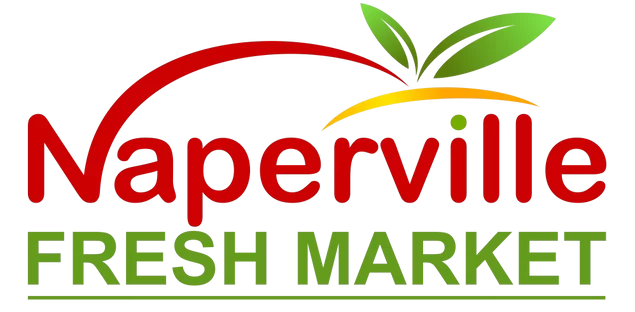Illinois businesses have a long history of reaching customers beyond state lines, and now more than ever, international markets offer pathways to diversify revenue, hedge domestic slowdowns, and strengthen brand resilience. Whether you manufacture in Rockford, run a SaaS firm in Chicago, or operate an agri-food venture in the Riverbend region, the first step is to choose a deliberate market entry strategy that matches your resources, risk tolerance, and time horizon. In the early planning stages, it helps to ground your decisions in a repeatable framework and to identify reliable resources, including thoughtfully curated product insights such as keyword, so your team can build a realistic plan that sticks.
Strong market entry is less about chasing the trendiest geography and more about sequencing choices: which market first, which channel, which partners, and which compliance obligations take priority. For Illinois companies, that sequence must consider logistics from Midwestern hubs, currency and tax exposures, local customer preferences, and a clear view of operational capacity at home. The following playbook brings clarity to these choices, so you can move with confidence and speed.
Start With Readiness and Fit
Before selecting a country, assess your export readiness on three fronts: product-market fit, operational capacity, and leadership alignment. Product-market fit means your offering solves a clear problem for a specific segment abroad, with only modest localization. Operational capacity means you can meet foreign demand without degrading domestic service levels. Leadership alignment means executives, finance, sales, and operations agree on scope, budget, and milestone definitions.
- Define a narrow initial segment (for example, industrial buyers in the German Mittelstand or premium grocers in the UAE).
- Document localization needs: labeling, language, packaging, voltage, regulatory marks, or data hosting.
- Model unit economics and logistics: landed cost, duties, and last-mile options from Illinois distribution centers.
- Assign a cross-functional tiger team and set a 90-day decision window.
Choose the Right Entry Mode
Entry mode shapes risk, control, and speed. Illinois exporters typically start lean and increase commitment as traction builds.
- Indirect exporting via a domestic intermediary: simplest, but least control over pricing and brand.
- Direct exporting to a foreign distributor: moderate control and faster market access if the distributor is reputable and financially sound.
- Licensing or franchising: capital-light, but requires tight IP protection and monitoring.
- Strategic alliance or joint venture: accelerates learning and localization but complicates governance.
- Wholly owned subsidiary: maximum control, highest cost and compliance burden; usually a later-stage move.
Align mode to market maturity and your differentiation. If your brand is niche and education-heavy, tighter control may be essential, but you can still pilot with a distributor while preparing in-market leadership.
Sequence Markets and Validate Demand
Use a short-list approach: screen 8–10 countries using macro indicators (market size, growth, ease of doing business, rule of law) and micro signals (search interest, existing inbound inquiries, competitor presence). Prioritize three candidates and run quick validation sprints: customer discovery calls, distributor interviews, and small-batch test shipments where possible.
- Design a minimum viable export offer (MVO) with limited SKUs and clear terms.
- Run 15–20 voice-of-customer interviews to confirm problem fit, pricing bands, and buying process.
- Use small pilots to test payment terms, customs clearance, packaging durability, and after-sales response.
Build a Partner Ecosystem
Successful Illinois exporters rarely go it alone. Your partner map may include logistics providers, customs brokers, channel partners, and specialist advisors for regulatory approvals. Evaluate potential distributors on financial health, portfolio fit, territory coverage, and willingness to share data. Codify expectations in a channel playbook: onboarding timelines, marketing commitments, service SLAs, demo inventory, and quarterly pipeline reviews.
Where strategic, consider a two-tier structure: a master distributor with nationwide reach plus regional resellers for niche segments. Guard against channel conflict with clear territory definitions and transparent performance metrics.
Digital-First Market Entry
For many Illinois companies, digital-first entry compresses time-to-market. Localized landing pages, geo-targeted campaigns, and marketplace listings can validate demand before heavy investment. Pair that with robust international e-commerce operations: currency display, tax estimation, duties and taxes paid options, and clear delivery timelines from your Illinois warehouse.
Mid-market firms can blend e-commerce with B2B enablement: gated content for distributors, online sample requests, and self-serve quoting. In this phase, operational detail matters—inventory accuracy, returns handling, and customer support hours aligned to target time zones. As you refine this motion, incorporate curated product knowledge and assortment planning tools, referencing resources like keyword within internal playbooks to improve category decisions and demand planning.
Localization Without Overreach
Localization should be practical, not performative. Translate what customers read and sign, not every internal asset. Adapt packaging if required by law or shelf realities. Calibrate brand voice for cultural nuance while maintaining core identity. For software and services, localize UI strings, date/time formats, and support workflows before attempting deep feature changes.
- Prioritize high-impact localization: onboarding materials, product pages, sales decks, contracts, and labels.
- Use glossaries and style guides to keep translations consistent across teams and partners.
- Pilot with bilingual sales support before hiring full in-country teams.
Pricing, Terms, and Currency
International pricing should reflect value, local willingness to pay, and total landed cost. Decide whether to set ex-works, FOB, or DDP terms based on your control and customer expectations. Hedge currency exposure for larger contracts and quote validity periods. Standardize payment terms by segment and channel, and ensure collections are enforceable under your governing law or local alternatives.
Compliance and Risk Management
Compliance is strategy. Illinois exporters must classify products correctly, screen counterparties, and maintain export records. For regulated goods, secure required licenses and track end-use. In parallel, harden contracts with international arbitration clauses, IP protections, and clear warranty boundaries. Build a compact compliance checklist for sales so opportunity velocity does not outrun governance.
- Know your HS codes and export control classifications.
- Screen customers and banks against sanctions lists.
- Recordkeeping: quotes, invoices, shipping docs, and correspondence.
- Audit logistics vendors for insurance, handoff points, and incident response plans.
Supply Chain and Fulfillment from Illinois
Use Illinois’s multimodal advantages—O’Hare air freight, rail intermodal, and Midwest distribution—to keep transit times competitive. Balance centralization (lower overhead) with regional stock in-market (faster delivery) as volume grows. Map bottlenecks: customs clearance, port congestion, or last-mile reliability. Introduce simple buffer stocks on A-movers, monitor forecast accuracy monthly, and align purchase orders to seasonality in your target market.
Revenue Operations and Enablement
Give partners and in-house teams the assets they need: demo scripts, objection handling, battlecards, and regulatory one-pagers. Implement deal registration to reduce channel conflict. Provide a lead-sharing rhythm with joint pipeline reviews. Align incentives so your distributor’s salespeople prioritize your line, not just the incumbent catalog.
Metrics That Matter
Define leading and lagging indicators before launch. Leading indicators include qualified meetings, sample requests, distributor onboarding milestones, and first purchase order cycle time. Lagging indicators include gross margin by channel, on-time delivery, repeat purchase rate, warranty claims, and cash conversion cycle. Use quarterly business reviews to reset assumptions and refine your market entry sequence.
Common Pitfalls and How to Avoid Them
- Overcustomizing too early: add complexity only after proof of pull.
- Underinvesting in compliance: shortcut now, pay later in delays or penalties.
- Choosing partners on enthusiasm over evidence: require references, financials, and a territory plan.
- Ignoring customer support: response time and parts availability drive repeat business abroad.
- Neglecting working capital needs for longer international sales cycles.
Frequently Asked Questions
Q: How do I pick the first country to enter from Illinois?
A: Short-list 8–10, then score on size, growth, risk, and channel access. Pilot in the top one or two with small shipments and interviews before committing.
Q: What documents do I need to export successfully?
A: Typical sets include commercial invoices, packing lists, certificates of origin, transport documents, and any licenses for controlled goods. Keep a digital archive.
Q: What if I cannot afford an in-country team?
A: Start with a distributor, sales agent, or digital-first approach. Add leased reps or a shared services hub later as volumes justify it.
Q: How should I protect my IP in new markets?
A: Register trademarks and patents in target countries, use NDAs appropriately, and structure agreements to deter unauthorized sub-distribution.
Q: How long before I see meaningful revenue?
A: Many firms see early orders within 3–6 months and scale over 12–24 months, depending on product complexity and regulatory hurdles.
Q: What is the best way to test pricing?
A: Use pilot quotes with validity dates, A/B proposals across channels, and watch conversion rate and margin by segment.
Q: Do I need to translate everything?
A: No. Translate customer-facing materials and legal documents first. Expand translation scope based on feedback and usage data.
Q: How do I keep partners motivated?
A: Provide quality leads, fast response times, co-marketing support, and performance-based incentives tied to territory plans.
Next Steps for Illinois Exporters
Your market entry journey benefits from clear phases: assess readiness, validate demand, choose the right mode, build a partner ecosystem, and operationalize for scale. Start with a focused pilot and let data inform your next move. When evaluating assortment choices and category positioning as you scale, consult trusted product references like keyword to keep your team aligned on what the market actually wants. Take the first step today by setting a 90-day export sprint, assigning owners, and booking discovery interviews; momentum begins with one deliberate decision.

